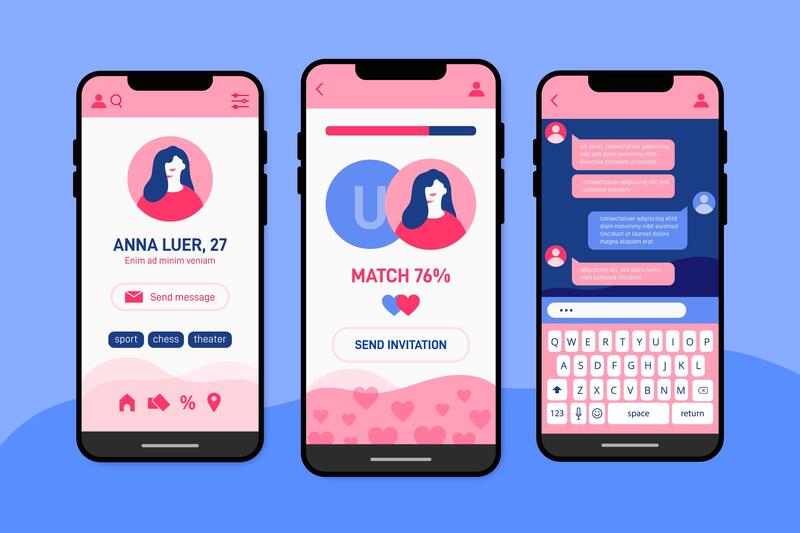
Video conference is your chance to authenticate candidates in ways words on a resume or online profile simply cannot.
Applying for a new job during a global pandemic is especially challenging; after all, who wants to meet face to face in real-time and risk exposure to COVID-19. Thus, companies have spent time since the beginning of March 2020 looking at video interviewing, hiring, virtual onboarding, and trying to react sensibly and safely throughout these unstable and fast-changing operating conditions. This past year has brought HR a host of unprecedented issues to navigate, including employee safety concerns and how to engage in a new remote world.
According to a new study by staffing firm Robert Half, employers are turning to virtual hiring by video and onboarding due to COVID-19—and many plan to continue post-pandemic due to its success. Three-quarters (75%) of 2,800 senior managers surveyed say their companies conducted remote interviews and onboarding sessions during the pandemic. More than 60% implemented these practices only since the pandemic began, and 12% did so before COVID-19 started.
“Organisations have transitioned to digital virtual hiring and onboarding incredibly quickly—the pivot has been remarkable,” says Richard Deosingh, a district president for Robert Half. “While there has been substantial growth in the practice of using video for interviewing and onboarding, there are many companies that have been using video for initial interviews with candidates even before the pandemic, and for them, the change was much easier.”
Not only has the implementation of the practice been successful, but so have the results: 60% said their companies shortened their hiring processes, and the same amount say they expanded their talent search geographically to attract a wider pool of candidates.
In general, video has become a part of most people’s personal lives. Just go on to any public transport system anywhere in the world and you will see people with their heads stuck in their phones or laptops looking at videos, so the shift to the business world has been quite seamless. Asynchronous (one-way) video interviewing speeds up the process for everyone involved by eliminating travel, costs and fitting in with hiring manager schedules more easily.
Now that employers can see the benefits of virtual hiring and onboarding, it is hard to see them going back to the old ways and they will continue to embrace video hiring as the standard operating procedure post-pandemic.
“Though it may have been hard to adopt or adapt to using video before it became necessary, this trial by fire has opened eyes to the time it can save during the hiring and onboarding processes. They may choose to adopt it as a practice moving forward, despite being back in the office,” Robert Half’s Deosingh says.
Karin Borchert, CEO of Modern Hire, predicts that the rapid shift to remote hiring that started this past year will become a permanent fixture at many organisations. As such, HR leaders need to be exploring and adapting to new technologies to support virtual recruiting, onboarding and hiring, while also ensuring a seamless candidate experience. Borchert recently shared her outlook for the future of hiring with Human Resource Executive (HRE) magazine:
Borchert: “The top priority for HR leaders in 2021 should be focusing on helping their organisations adjust to the unexpected change of remote work and remote hiring—a trend that began this year due to the pandemic. This year ushered in many changes that required employees and their employers to act quickly and transition to remote work, which was a new concept for many and posed unique challenges. HR leaders should prioritise making the work-from-home situation as positive of an experience as it can be, as we’ve learned that it will likely stick around long after the pandemic is over. HR leaders must nail down the logistics of how their organisation works, their policies, how they manage, how they engage, evaluate and promote their workforce and, of course, how they hire—all remotely. This will require organisations to adopt new technologies and methodologies in 2021.”
HRE: In what ways has the pandemic impacted how HR will hire in the long run, when it comes to the technologies and strategies used?
Borchert: “The pandemic has accelerated the use of technology in hiring and, moving forward, companies will continue to use hiring technology. For companies like Walmart and Amazon, business boomed amid COVID-19, and thousands of positions opened up to keep up with supplies that were flying off the shelves. Large retailers turned to technology to keep up with the unprecedented amount of applications they were receiving. By adopting technology like pre-hire assessments and virtual interviewing technology, which support fast and objective hiring decisions, companies were able to drastically reduce logistical constraints, shorten the time-to-hire cycle and keep both employees and candidates safe amid ongoing COVID-19 concerns.
Because of the success, these large enterprises saw with recruiting, hiring, and onboarding new employees, they will likely keep their hiring processes 100% virtual post-pandemic, as technology allowed them to make smarter hiring decisions in a way that in-person interviews could not compete with. In 2021 and beyond, most organisations will do the same and continue completely virtual hiring processes due to the efficiency, effectiveness, and fairness of the technology. And while some fear that they won’t receive a personalised interview experience with virtual hiring, an engaging, branded experience is still possible with remote hiring with interview features like virtual job tryouts, phone and video interviews, and automated chatbots to help candidates work through any issues they may be having during the process.”
HRE: What does the world of work look like in 2021, particularly when it comes to remote work?
Borchert: “Remote work will continue to be part of the job in the future, as most companies have learned their workforce can be just as productive at home as they are in the office. This means remote hiring will continue in tandem, as it has proven to be advantageous throughout the pandemic, for a number of reasons.
One of the biggest perks of remote recruiting is it allows not only a more diverse workforce but enables employers to bring in domain expertise without regard for geography. Aside from expanding the candidate pool, there are several other benefits of remote hiring.”
In a recent blog post, Jessica Newman of Canadian video interviewing company VidCruiter.com compares Online dating to online hiring:
“Online dating mirrors online hiring in many ways. Both are complicated by similar challenges. For one, it’s often difficult to trust the information we read because people can easily hide behind the screen. At best, online profiles are one-dimensional; at worst, they’re flat-out misleading.
On dating sites/apps, people lie about their age, weight, height, or even marital status. On resumes, people embellish their education, work history, or skill sets. They don’t tell the whole story. Eventually, we discover someone isn’t as great as we believed them to be, and that is when disappointment creeps in. There’s gotta be a better way!”

Online hiring and online dating have similar challenges - it’s often difficult to trust what we read online.
The Power of Virtual Interviews in Matchmaking
If a photo is worth 1,000 words, a video is worth 10,000 words. That’s when you start to see someone.
Online digital video interviews help expose lies and embellishments by adding an extra layer of realness, coming close to what we’d experience in real life. There’s eye contact. We can hear the inflection in a candidate’s voice. There are facial expressions and there’s body language, which all help us make better-informed decisions.
People want to see photos and videos of potential suitors, and hiring managers want to see more multi-dimensional aspects of job applicants, too. A video conference is your chance to authenticate candidates in ways words on a resume or online profile simply cannot.
To summarise, we may have been future shocked into the practice of digital video interviewing, but it is here to stay and it has already become the new normal.

Martin Conboy is well recognised as one of the leading voices of the outsourcing industry and its role in facilitating outsourcing success in the Asia Pacific.


